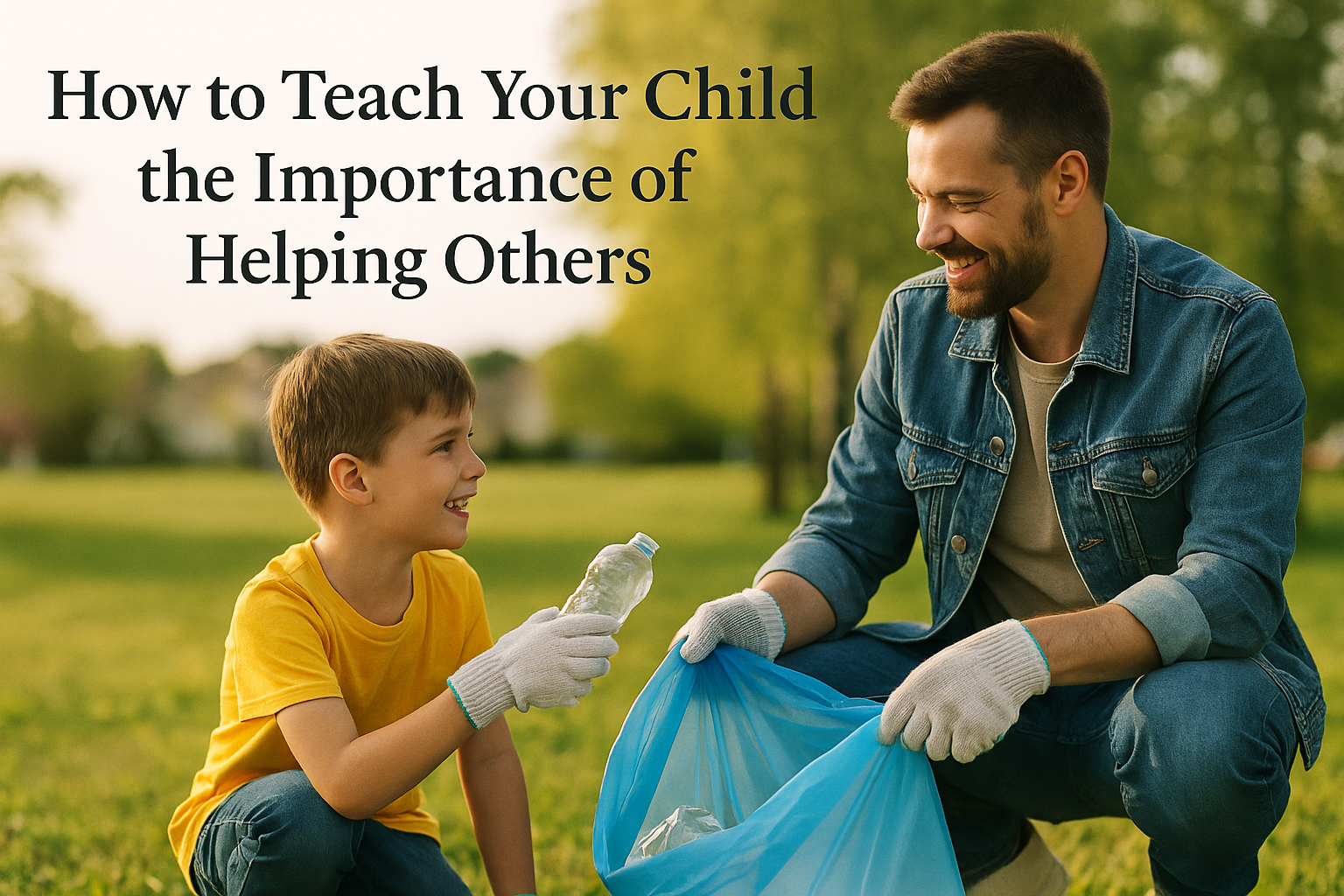Helping others is one of the most meaningful values you can teach your child. It promotes kindness, empathy, cooperation, and a sense of community. It also helps children feel useful and empowered—knowing that their actions, even small ones, can make a big difference.
The best part? Children are naturally inclined to be helpful. With the right encouragement, you can nurture that instinct into a lifelong habit of generosity and compassion.
Here’s how to teach your child to value helping others in their daily life.
Talk About What Helping Means
Start by explaining what helping others really looks like—not just doing chores, but noticing when someone needs support and stepping in with kindness.
Examples include:
- Holding the door open for someone
- Sharing a toy or snack
- Offering to help a classmate who’s struggling
- Checking in on a friend who’s sad
- Helping clean up after a meal
You might say:
“Helping means looking for ways to make life a little better for someone else.”
Simple, clear language helps kids connect to the value.
Be a Role Model of Service
Children learn most by watching what you do.
Let them see you:
- Offer help to neighbors or friends
- Volunteer in your community
- Show kindness to strangers
- Speak kindly about helping others
- Prioritize empathy and action
When you demonstrate helpfulness in everyday life, your child learns that helping is not just a duty—it’s a way of living.
Encourage Helping at Home
The home is a great place to start building helpful habits. Make helping a normal part of your child’s daily routine.
Try:
- Asking for help with setting the table, feeding pets, or tidying up
- Thanking them genuinely when they pitch in
- Letting them take the lead in small tasks (“Can you be in charge of watering the plants?”)
- Reminding them that helping is a way to show love to the family
When children help at home, they feel valued and connected.
Celebrate the Feeling of Helping
After your child helps someone, talk about how it felt—not just what they did.
Ask:
- “How did it feel to help your friend today?”
- “Did you see their face when you gave them that drawing?”
- “What do you like about helping others?”
This helps them associate helping with positive emotions and internal rewards, rather than just seeking praise.
Read Books and Share Stories About Kindness
Children connect deeply with stories. Use books to highlight characters who help others and make a difference.
Examples:
- Characters who stand up for others
- Stories about sharing, inclusion, and empathy
- Real-life biographies of people who served their communities
After reading, ask questions like:
- “What did you like about what they did?”
- “Would you want to help someone like that someday?”
- “What would you have done in that situation?”
Stories open the door for big conversations.
Involve Them in Acts of Service
When appropriate, include your child in real-world opportunities to help.
Ideas:
- Donate toys or clothes to a local shelter
- Bake something together for a neighbor
- Participate in a local cleanup event
- Write thank-you notes to essential workers
- Collect food or supplies for families in need
Explain why you’re helping:
“We’re doing this because everyone deserves support—and we can be part of the solution.”
Encourage Empathy in Daily Situations
Empathy is the root of wanting to help. Encourage your child to notice and care about how others feel.
Try asking:
- “How do you think your friend felt when that happened?”
- “What could you do to make them feel better?”
- “Have you ever felt like that too?”
The more your child practices putting themselves in someone else’s shoes, the more naturally they’ll want to help.
Teach That Everyone Can Make a Difference
Helping doesn’t have to be big or dramatic. Small actions add up.
Tell your child:
- “Even little things matter.”
- “You don’t have to wait to be a grown-up to help.”
- “Kindness is powerful, even in small doses.”
Help them see that their contributions—no matter how small—are meaningful.
Make Helping a Family Value
Build a family culture that values kindness and service.
Ideas:
- Have a “kindness jar” where you write down good deeds
- Do weekly “helping missions” as a family
- Celebrate when someone goes out of their way to help
- Talk at the dinner table about how each person helped someone that day
When helping is part of your family identity, children grow up believing it’s part of who they are.
Helping Others Helps Children Grow
When you teach your child to help others, you’re teaching them to look beyond themselves. You’re building empathy, confidence, humility, and compassion—all qualities that make them stronger, more thoughtful humans.
More than anything, you’re showing them that the world becomes a better place when we take care of one another.
Because kindness isn’t just something we do—it’s something we become.
